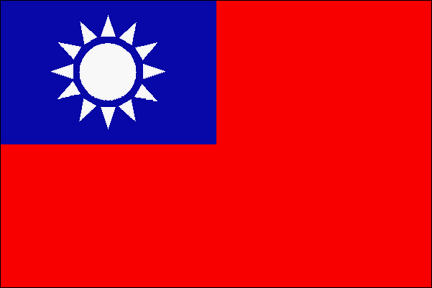Index | Search |






 Taiwan's geographical location makes air defense critical for overall defense of the nation. At present, the ROC Air Force has some 68,000 officers and men.
The Air Force General Headquarters is responsible for the Air Force's combat strength and commands and supervises all subordinate troops and units. The units include the Air Force Operations Command , the Air Force Logistics Command , the Air Defense Artillery Command , and various tactical wings. Under the wing in descending order are the group , squadron , and flight. Personnel are divided into operational and logistical support systems under the command of the Air Force GHQ.
The main operational units in the ROC Air Force include the following:
Taiwan's geographical location makes air defense critical for overall defense of the nation. At present, the ROC Air Force has some 68,000 officers and men.
The Air Force General Headquarters is responsible for the Air Force's combat strength and commands and supervises all subordinate troops and units. The units include the Air Force Operations Command , the Air Force Logistics Command , the Air Defense Artillery Command , and various tactical wings. Under the wing in descending order are the group , squadron , and flight. Personnel are divided into operational and logistical support systems under the command of the Air Force GHQ.
The main operational units in the ROC Air Force include the following:
The Taiwan Air Force has about 70,000 personnel and over 400 combat aircraft. The current inventory includes approximately 180 older F-5E/F fighters and over 100 more modern Indigenous Defense Fighters (IDFs). Fighters. The IDF has faced numerous developmental and operational problems since its inception in the 1980s. Nevertheless, its technical sophistication, with its fly-by-wire controls and blended wing-body design, is believed to be superior to any aircraft produced and deployed by China to date. Production of all 130 IDFs was completed in early 2000. Most of the IDFs are expected to be armed with the indigenously-produced, BVR Tien Chien-II (Sky Sword-II) AR AAM.
Taiwan also has purchased 150 F-16 fighters from the United States: 120 single-seat "A" models and 30 two- seat "B" models. On-island deliveries, which began in April 1997, were completed by the end of 1999 [by which time four aircraft had been lost to accidents]. These aircraft are armed with upgraded AIM-7M/SPARROW SAR and AIM-9P4 and AIM9S SIDEWINDER IR AAMs. Deliveries of 60 French-built Mirage 2000-5s also began in April 1997 and were completed by October 1998 [though by early 2000 two aircraft had been lost to accidents]. With its four MICA active radar (AR) and two MAGIC II infrared (IR) AAMs, the Mirage 2000-5 is Taiwan's most formidable air defense fighter. The TAF's current strategy is to employ the IDF for low altitude interception and ground attack; the F-16 for mid altitude offshore interception and ground attack; and, the Mirage 2000-5 for high altitude offshore interception. Taiwan also is planning an upgrade program for about 100 F-5 fighters. The systemic integration and generational problems that affect Taiwan's overall forces with respect to modernization apparently are having the greatest impact on the TAF, where the technology curve is highest.
Taiwan has established an air defense early warning network which, when used in conjunction with its ground-based SAMs and fourth-generation tactical aircraft, appears to pose a credible deterrent against an air attack from the mainland. Taiwan has replaced its old SKY NET air defense network with a new network called STRONG NET to provide a comprehensive picture of the surrounding airspace.
The Chinese Air Force Academy (CAFA) trains pilots for jet fighters and other combat and transport aircraft. Cadets learn aeronautic navigation, combat tactics, and related skills in a program that lasts four years. They participate in supervised flight operations during their second year. At the beginning of their junior year, cadets are divided into five sections to receive specialized training in flight skills, aeronautic machinery, electronic communication, anti-aircraft warfare, and air control.